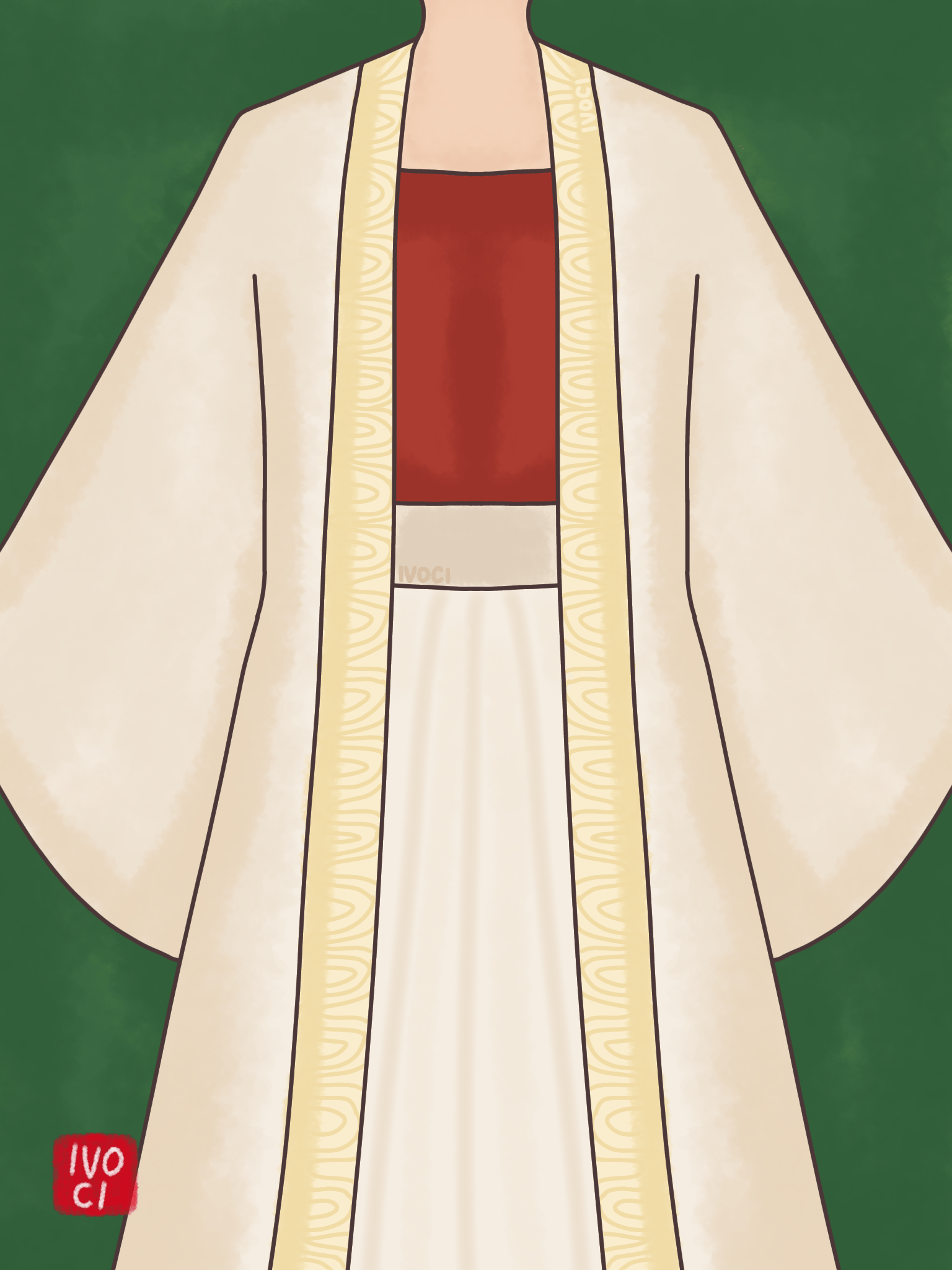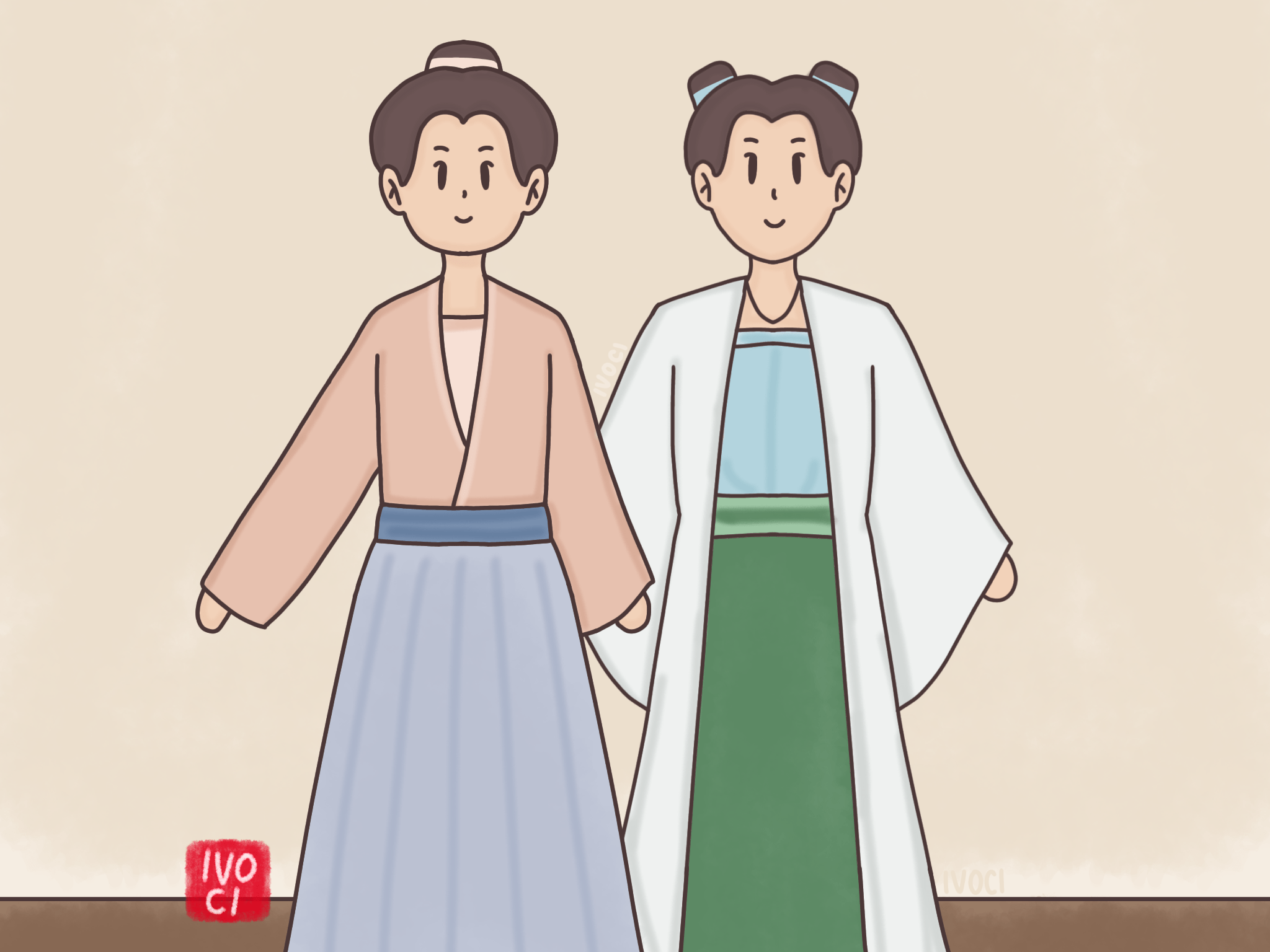Moxiong (Chinese: 抹胸 ; pinyin: mǒ xiōng), is an undergarment worn by women with hanfu.
Moxiong plays the same role as a bra, but is longer, covering the stomach as well.
Moxiong models have changed throughout history.
Moxiong can also be called by other names hezi (Chinese: 诃子 ; pinyin: hē zǐ), waxiong (Chinese: 袜胸 ; pinyin: wà xiōng), lanqun (Chinese: 襕裙 ; pinyin: lán qún), hehuan lanqun (Chinese: 合欢襕裙 ; pinyin: hé huān lán qún).
Moxiong hails from the Tang dynasty and its origins are related to the imperial consort of the Tang dynasty, Yang Guifei.
Moxiong is also used as a clothing accessory in the qixiong ruqun, a combination of Tang dynasty clothing sometimes referred to as heziqun.
Moxiong was popular, especially in the Tang, Song, and Ming dynasties.
During the Song dynasty, moxiong was often worn under the beizi.
There is a source that stated that this underwear was called hezi during the Tang dynasty, and called moxiong during the Song dynasty.
This accessory garment item bears a resemblance to the dudou of the Qing dynasty but is not of the same construction and design.
This moxiong/hezi is a hanfu underwear item that was revived in the 21st century after the hanfu movement.
Construction and design
According to Ming dynasty records, the Tang dynasty hezi (moxiong) was tied from the back to the front, and the bottom had a strap so that the qun (skirt) waistband could be tied together.
However, to date, there is still a dearth of hezi archaeological artifacts dating from the Tang dynasty. The painting “A Court Lady Adorns Her Hair With Flowers” by the 8th-century painter Zhou Fang, of the Tang dynasty, is used as the main reference for restoring the hezi today.
On the other hand, there are Song dynasty moxiong archaeological artifacts unearthed in Fujian Province.
Moxiong in the Song dynasty was a one-piece garment worn as an undergarment, but more conservative in style as it covered the wearer’s chest and abdomen.
Modern moxiong
Today, there are three types of Song dynasty style moxiong produced and sold by hanfu merchants, namely:
a. Gongzizhe moxiong (Chinese: 工字褶抹胸 ; pinyin: gōng zì zhě mǒ xiōng)
Gongzizhe moxiong featuring square folding is a 21st-century invention and didn’t exist in the Song dynasty.
Its creation and development were the results of restoration errors by early hanfu merchants while trying to recover cultural relics of the Song dynasty in the past.
b. Sanjiao shousheng moxiong (Chinese: 三角收省抹胸 ; pinyin: sān jiǎo shōu shěng mǒ xiōng)
There are two types of sanjiao shousheng moxiong: fixed pleats and non-fixed pleats. Currently, traders do most of the fixed folding. Compared to the gongzizhe moxiong type, the sanjiao shousheng moxiong fits the body curves better.
c. One-piece moxiong (Chinese: 一片式抹胸 ; pinyin: yī piàn shì mǒ xiōng)
One-piece moxiong is a moxiong without folds.



Leave a Reply